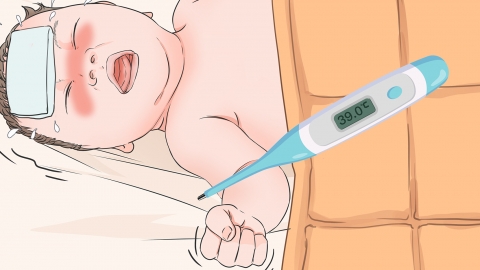What are the symptoms of a child infected with the brain-eating amoeba?
The term "brain-eating amoeba" generally refers to amoebas. Typically, when children are infected with amoebas, symptoms may include abdominal pain and diarrhea, fever and chills, vomiting and loss of appetite, mucus and blood in the stool, and weight loss. If there are any concerns, it is recommended to seek medical advice early. Detailed analysis is as follows:

1. Abdominal pain and diarrhea: After amoebas invade the intestines, they stimulate the intestinal mucosa, causing inflammation and resulting in abdominal pain in children. The pain is mostly concentrated in the lower right abdomen, presenting as continuous or intermittent episodes, often accompanied by frequent diarrhea, with bowel movements occurring several to dozens of times per day.
2. Fever and chills: The inflammatory response caused by the infection stimulates the body's temperature-regulating center, leading to fever in children, with body temperature often rising to 38°C or higher. Symptoms may also include chills and a generally poor mental state, with a noticeable decrease in physical activity.
3. Vomiting and loss of appetite: The digestive system is affected by intestinal inflammation, causing gastrointestinal discomfort and nausea with vomiting, which worsens after eating. At the same time, due to gastrointestinal discomfort, appetite decreases, and the child loses interest in foods they usually enjoy, significantly reducing food intake.
4. Mucus and blood in the stool: Amoebas erode the intestinal wall tissue, causing local ulcers and bleeding, resulting in stool mixed with mucus and blood. The stool appears dark red or resembles jam, has a fishy odor, and is visibly different from the stool of ordinary diarrhea.
5. Weight loss: Due to prolonged diarrhea, vomiting, and loss of appetite, children may experience insufficient nutrient intake, preventing the body from obtaining enough energy to sustain normal growth and development, leading to weight loss, a thin physique, loose and inelastic skin, and slowed growth rates.
If you notice your child exhibiting the aforementioned symptoms, timely medical evaluation and diagnosis are necessary. In daily life, attention should be paid to food hygiene, ensuring that food is thoroughly washed and cooked, avoiding consumption of raw water or contact with contaminated water sources by children; teach children to develop good handwashing habits and regularly clean toys and tableware to reduce the risk of amoeba infection.





